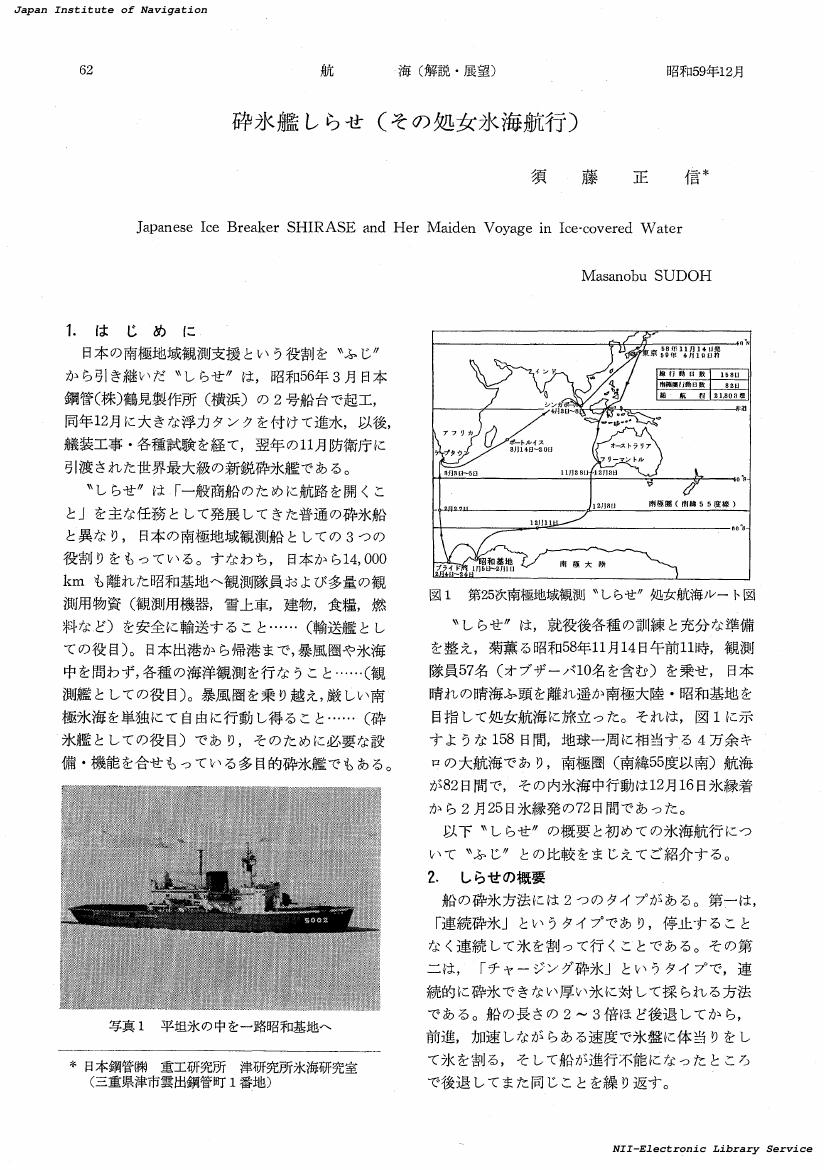3 0 0 0 OA 原子力発電所事故で放出された不溶性放射性粒子の形態と組成
- 著者
- 足立 光司
- 出版者
- 日本エアロゾル学会
- 雑誌
- エアロゾル研究 (ISSN:09122834)
- 巻号頁・発行日
- vol.32, no.4, pp.255-260, 2017-12-20 (Released:2018-01-12)
- 参考文献数
- 17
Insoluble radioactive particles emitted from the Fukushima nuclear accident have been found from the samples collected in various environments. This manuscript summarizes the studies that characterized such particles using electron microscopy and synchrotron radiation analyses. The shapes and compositions of 33 radioactive particles from aerosol particles, soil, plant tissues, non-woven fabric cloth, and masks have been identified. These radioactive particles contained radioactive Cs ranging from 0.5 to 109 becquerel per particle. Diameters of spherical particles ranged from 0.8 to 4 μm, and those of non-spherical particles were from 1.4 to 250 μm. They consisted of silicate glass with Cs, Zn, and Fe as well as many minor elements (in total, 33 elements were detected). These particles tended to have more Cs on their surface than the core and contained nano-crystals consisting of, for example, Cu-Zn-Mo, Ag-Te, CaSO4, FeCr2O4, Sn-Te, Ag-Sb, and iron oxides. Such crystalline structures will be important to understand the formation and degradation processes.
3 0 0 0 OA 砕氷艦しらせ : その処女氷海航行
- 著者
- 須藤 正信
- 出版者
- 公益社団法人 日本航海学会
- 雑誌
- 航海 (ISSN:24331198)
- 巻号頁・発行日
- vol.82, pp.62-70, 1984-12-15 (Released:2017-07-12)
3 0 0 0 OA 官報
- 著者
- 大蔵省印刷局 [編]
- 出版者
- 日本マイクロ写真
- 巻号頁・発行日
- vol.1950年06月30日, 1950-06-30
3 0 0 0 IR 乳児の言語獲得と発達に関する研究
- 著者
- 戸田 須恵子
- 出版者
- 北海道教育大学
- 雑誌
- 釧路論集 : 北海道教育大学釧路分校研究報告 (ISSN:02878216)
- 巻号頁・発行日
- vol.37, pp.101-108, 2005-10-30
本研究は、乳児が初語としてどのようなことばを発し、24ケ月までにことばをどれだけ獲得していくのかを明らかにすることを目的とした。27組(男児16名、女児11名)の母子の協力が得られた。縦断的方法によって、生後5ケ月から24ヶ月まで約2ケ月毎に家庭訪問をし、計10回の母子遊びを観察した。言語については、13ケ月から訪問時に母親から乳児の発語について聞いた。しかし、遊びで発したことばはデータに含まれていない。結果は、13ケ月から24ヶ月まで乳児はことばを獲得していき、18ヶ月以降の語彙獲得の増加は著しかった。最初の13ケ月時の調査で既に20語を獲得している乳児もおり、乳児はそれ以前に既にことばを獲得していることが推測された。13ヶ月〜24ケ月までに最も多く獲得した乳児の語数は470語で、反対に最も少ない語数は12語と、個人差が非常に大きいことが明らかになった。又、初語としては、パパ、ママのことばが一番多く、次いで、食べ物のマンマが多く、イナイイナイバー、イタイなどのことばも多く出ていた。さらに、24ケ月までに発語したことばを領域別に分類すると、乳児は、動詞・活勅語を最も多く獲得していることが明らかとなった。次いで、食べ物の名前が多く、そして質と属性のことぼか続いた。又、時間に関することばの出現は一番遅かった。時間に関することばは「あとで」ということばが多く、24ケ月までに時間に関することばが出ている乳児は11人であった。二語文については15ケ月頃から二語文が出ている乳児もいるが、一般には、20ケ月頃から発語する乳児が多かった。二語文が出始めると、三語文も出てくるようであった。言語が発達するにつれて、母子遊びはことばと行動を交えた遊びが加齢と共に展開していった。又、ことばの発達の個人差を見るために、4ケースについて検討した結果、母親のコミュニケーションと環境の重要性が示唆された。
3 0 0 0 OA 特集「確率論とリスク論の悩ましき関係」にあたって
- 著者
- 竹村 和久
- 出版者
- 日本行動計量学会
- 雑誌
- 行動計量学 (ISSN:03855481)
- 巻号頁・発行日
- vol.43, no.1, pp.1-3, 2016 (Released:2016-09-09)
- 参考文献数
- 17
3 0 0 0 OA 常山紀談
- 著者
- 湯浅常山 (元禎) 著
- 出版者
- 三教書院
- 巻号頁・発行日
- vol.巻之1-8, 1911
3 0 0 0 IR グローバル・ジャスティスに直面するリベラル優生主義
- 著者
- 桜井 徹
- 出版者
- 神戸大学
- 雑誌
- 国際文化学研究 : 神戸大学国際文化学部紀要 (ISSN:13405217)
- 巻号頁・発行日
- vol.35, pp.41*-72*, 2010-12
- 著者
- 香山 瑞恵 永田 奈央美 高谷 知憲 高橋 正憲
- 出版者
- 日本教育工学会
- 雑誌
- 日本教育工学会論文誌 (ISSN:13498290)
- 巻号頁・発行日
- vol.31, no.1, pp.97-106, 2007
- 被引用文献数
- 2
教科「情報」の教科書は,平成15年度に初版が発刊され,平成17年度には改訂版が発刊されている.本研究ではこれらの教科書に関する定量的データに基づく分析から,その特徴を明らかにし,特に変化の著しい内容に関する変化傾向の定性的分析を通じて,普通教科「情報」の範囲と教授内容の方向性に関して考察した.その結果,情報Aでは「問題解決」に関する内容の記述が詳細かつ具体的になり,主体的な情報活用のための態度形成に関わる記述が増加した一方で,コンピュータリテラシーに相当する記述の本文内での扱いが減少していることがわかった.また情報Bでは,コンピュータの機能や仕組みに関する記述の精査が進み,社会における情報技術の在り方を示す内容が重視されていることがわかった.情報Cでは,情報A同様にリテラシー的記述の減少がみられ,さらに情報通信ネットワークの仕組みと適切なネットワークコミュニケーションの在り方とに関する記述が顕著に増加していた.
3 0 0 0 OA 北海道池田町におけるハシボソガラスとハシブトガラスの外部計測値とその性差
- 著者
- 玉田 克巳
- 出版者
- The Ornithological Society of Japan
- 雑誌
- 日本鳥学会誌 (ISSN:0913400X)
- 巻号頁・発行日
- vol.53, no.2, pp.93-97, 2004 (Released:2007-09-28)
- 参考文献数
- 25
- 被引用文献数
- 8 7
Sexual differences of Carrion Corvus corone orientalis and Jungle crows C. macrorhynchos japonensis were examined. Crows were captured by 'multi-trap' during April 1989 to June 1990 in Ikeda, eastern Hokkaido. Body mass, bill length, natural wing length, tail length, and tarsus length of carcasses were all measured. They were aged by tongue-markings and dissected in order to examine their reproductive organs. They were classified into two age-classes (adults and juveniles). Males were larger than females in all measurements for adults and juveniles of both species. Discriminant function analysis was carried out. The probability of correct discrimination of sexes for Carrion Crows was 87% for adults and 80% for juveniles. For Jungle Crows it was 91% for adults and 92% for juveniles. The sexes of both adult and juvenile Jungle Crows could be determined by discriminant function analysis.
3 0 0 0 有機リン系農薬の簡易検査キットの開発研究
【研究目的】農薬を用いた中毒事件・事故のうち、約3分の1を占める有機リン系農薬の簡易検査キットを開発した。【研究方法】キットは検知管方式とし、炭酸水素ナトリウム層、反応層、保護層の3層構造とした。これまでの簡易検査キットでは二段階で行われていた反応を一段階で行うため、反応層にはアルカリ剤のトリスヒドロキシメチルアミノメタンとニトロベンジルピリジンを両方コーティングした担体を入れた。炭酸水素ナトリウムは反応促進のために入れ、保護層は加熱時の液体の漏洩を防ぐために付加した。使い方は、検知管の両端をカットして反応層が湿る程度まで試料を吸引し(約100μl)、2分間ドライヤーで加熱して反応層の色を確認し、反応層が青~紫に呈色すれば陽性と判断する。反応を確認するまでにかかる時間は3分程度であった。本キットは農薬の原液、それを薄めた水溶液および法医学的試料に対して使用することができた。対応できる法医学的試料は尿、血清、胃内容物、吐瀉物で、胃内容物や吐瀉物にも胃液を考慮したpH調製を行うことなく使うことができた。色が濃い試料、粘性がある試料等は水で希釈することでキットの発色を確認することができ、全血、溶血試料、希釈しても色が濃い試料は、有機溶媒による抽出を行えば発色の確認が可能であった。なお、これらの試料の簡易検査は、鑑定の一環として行った。ドライヤーや電源がない場合には、熱源としてライターを使用することも可能であり、その場合はさらに短時間(20秒以内)で発色が確認できた。有機リン系農薬と同様の中毒症状を示すカルバメート系農薬では検知管は呈色せず、他の農薬に対して使用しても有機リン系農薬と同様の呈色をするものはなかった。【研究成果】本簡易検査キットは、使用にあたり特別な器材が必要なく、短時間で結果が得られるため、検視や救急医療の現場での使用に適していると考えられる。
3 0 0 0 衆議院議員総選挙をめぐる新聞論調
- 出版者
- 公明選挙連盟
- 巻号頁・発行日
- vol.第30回, 1964
3 0 0 0 OA 日本海交易の発展と昆布
- 著者
- 古畑 徹
- 出版者
- 金沢大学
- 雑誌
- 日本海の環境と石川の食文化,講演要旨集
- 巻号頁・発行日
- pp.8-9, 2005-02-27
金沢大学文学部
- 著者
- 綿谷 安男
- 出版者
- 一般社団法人 日本数学会
- 雑誌
- 数学 (ISSN:0039470X)
- 巻号頁・発行日
- vol.63, no.4, pp.463-468, 2011 (Released:2014-01-11)
- 参考文献数
- 9
3 0 0 0 OA 3.α-トコトリエノールとアスタキサンチンの 相乗的抗酸化効果
3 0 0 0 OA 全愛知大学野球野球連盟選抜メンバーによるハバロフスク (ソ連) 親善野球について
- 著者
- 滝 正男 Masao Taki
- 雑誌
- 中京大学教養論叢 = Chukyo University bulletin of the Faculty of Liberal Arts (ISSN:02867982)
- 巻号頁・発行日
- vol.30, no.3, pp.845-871, 1990-02-28
3 0 0 0 RDFとSPARQLによる多様なデータの活用
- 著者
- 神崎 正英
- 出版者
- 一般社団法人 情報科学技術協会
- 雑誌
- 情報の科学と技術 (ISSN:09133801)
- 巻号頁・発行日
- vol.70, no.8, pp.399-405, 2020-08-01 (Released:2020-08-01)
多様なデータの共通点やつながりを見つけ,それを用いて狙いのデータを取り出し,分析や視覚化などによって付加価値を生むためには,複数ソースのデータを集約しても共通点が得られる語彙やモデルの設計,つながりを見出すための値の正規化やリンク,そしてそれを適切に利用できるクエリが必要になる。RDFの導入期から行なわれてきたデータ設計やリンクの工夫を,図書館を始めとするGLAMやポータルの具体例を用いて紹介する。またそれらを利用するSPARQLクエリ例を示し,他のケースに応用するヒントにもなるように解説する。
3 0 0 0 IR 歴史書と「歴史」の成立--『西南記伝』の再検討(1)
- 著者
- 大谷 正
- 出版者
- 専修大学法学会
- 雑誌
- 専修法学論集 (ISSN:03865800)
- 巻号頁・発行日
- no.100, pp.29-64, 2007-07
3 0 0 0 IR 病院看護職における職員間暴力・ハラスメントの実態と抑うつとの関連
- 著者
- 伊藤 厚子 馬場 薫 田中 幸子
- 出版者
- 東北文化学園大学医療福祉学部看護学科
- 雑誌
- 東北文化学園大学看護学科紀要 = Archives of Tohoku Bunka Gakuen University Nursing (ISSN:21866546)
- 巻号頁・発行日
- vol.9, no.1, pp.1-11, 2020-03
本研究の目的は、病院で看護職が受ける職員間暴力・ハラスメントの実態と抑うつとの関連を明らかにすることである。400床以上500床未満の3病院、1,107名の看護職を対象に質問紙調査を行い、抑うつ状態の評価はCES-Dを使用した。職員間暴力・ハラスメントを受けた者のうち、所属長に報告した者は32.7%であり、言葉の暴力・いじめ・パワハラを受けた者は受けたことがない者よりCES -D得点が高いことが明らかとなった。職員間暴力・ハラスメントの中でもいじめを受けた者は特に抑うつ傾向を誘発しやすいことから、管理者は職員の人間関係に注意するとともに、職員が報告や相談をしやすい環境や関係作りの必要性が示唆された。
3 0 0 0 OA 心臓ピクニック : 鼓動に触れるワークショップ(<特集>ハプティクスとVR)
- 著者
- 渡邊 淳司 川口 ゆい 坂倉 杏介 安藤 英由樹
- 出版者
- 特定非営利活動法人 日本バーチャルリアリティ学会
- 雑誌
- 日本バーチャルリアリティ学会論文誌 (ISSN:1344011X)
- 巻号頁・発行日
- vol.16, no.3, pp.303-306, 2011-09-30 (Released:2017-02-01)
- 参考文献数
- 11
- 被引用文献数
- 3
You don't usually care about your own heartbeats, unless you are in a specific situation such as when getting nervous or injured. In the workshop your heartbeats are externalized with a concise system, which is composed of a vibration speaker and stethoscope. Heartbeat sounds taken by the stethoscope are sent to the vibration speaker via information processing circuit, and the system enables you to hear and touch states of your own heartbeats, and to exchange them with others. This workshop is aimed to provide a gut feeling of living self. The current paper describes the concept of workshop, and reports the participants' comments.
3 0 0 0 OA 官報
- 著者
- 大蔵省印刷局 [編]
- 出版者
- 日本マイクロ写真
- 巻号頁・発行日
- vol.1917年05月19日, 1917-05-19



